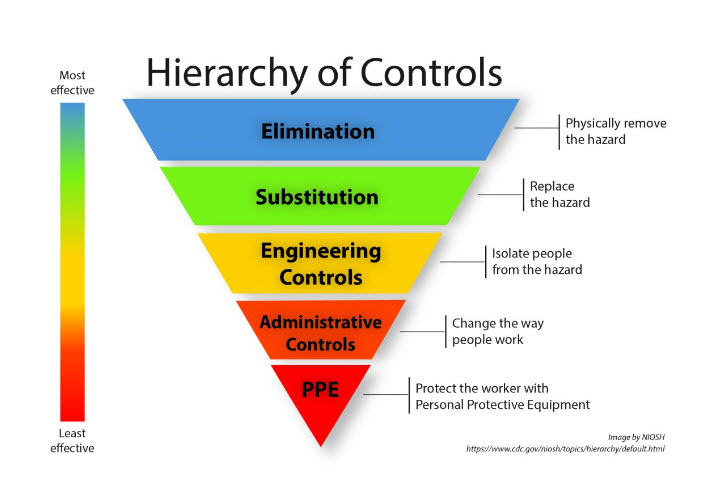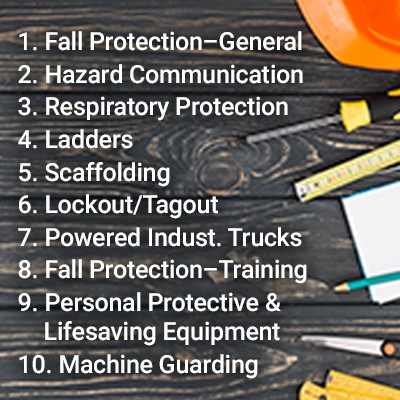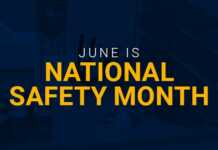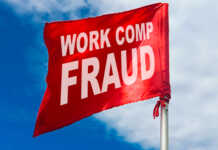Personal Protective Equipment (PPE) is commonly one of OSHA’s Top Ten Most Frequently Cited Safety Violations. According to OSHA, thousands of employees are blinded each year from work-related eye injuries that are preventable with the proper equipment.
Most OSHA’s PPE citations issued for lack of eye and face protection are often due to employees simply disregarding the requirements to wear proper PPE, such as glasses, goggles, and face shields, according to National Environmental Trainers.
Eye and face protection is essential for many workers as part of their PPE and must be provided when necessary to protect workers from chemical, environmental, radiological, or mechanical irritants and hazards that may cause injuries in the workplace.
Don’t become an OSHA top ten statistic: How to prevent eye injuries in the workplace
The key for employers to ensure a safe and healthy workplace and avoid becoming an OSHA top ten statistic is guaranteeing management systems are in place to assess hazards and the need for PPE in order to avoid eye injuries at work.
When I consult with ICW Group workers’ compensation customers about PPE requirements, our conversation starts with the hierarchy of controls for their specific workplace hazards.
Before reaching the point of requiring and selecting PPE, a risk assessment is crucial to ensure the best control methods have been identified.
The hierarchy of controls is a component of an employer’s formal system for completing a hazard assessment to identify exposures and select the proper PPE (this is a mandated standard for California employers). It is also a way to determine which actions will best control exposures. There are five levels of action to reduce or remove hazards. The preferred order of action based on general effectiveness is:
- Elimination – Physically remove the hazard
- Substitution – Replace the hazard
- Engineering controls – Isolate people from the hazard
- Administrative controls – Change the way people work
- Personal protective equipment – Protect the worker with PPE
Using this hierarchy can lower worker exposure and reduce the risk of illness or injury.

Eye and face protection is a subset of Federal OSHA’s PPE standard and Cal OSHA’s orders for construction and general industry. This standard requires employers to provide PPE (if work practice or engineering controls have not eliminated the risk of injury) when their workers are exposed to potential eye injuries because of their job duties or tasks.
Potential face and eye hazards in the workplace
Examples of eye and face hazards include operations that produce or expose workers to flying objects/debris, liquid chemicals, potentially harmful light radiation, molten metal, acids or caustic liquids, and chemical gases or vapors.
Workers should wear personal protective eyewear, such as goggles, face shields, safety glasses, or full-face respirators for eye safety in the workplace. Choose eye protection specifically for the nature and extent of the hazards, the circumstances of exposure, and the other PPE used. It must be fit to the individual or adjustable to provide proper coverage, and it should be comfortable while also allowing for peripheral vision.
Hazard assessment and equipment selection
An employer shall assess the workplace to determine if hazards are present or likely to be present, necessitating using PPE. If such hazards are present or likely to be present, the employer shall:
(A) Select and have each affected employee use the types of PPE that will protect the affected employee from the hazards identified in the hazard assessment.
(B) Communicate selection decisions to each affected employee; and,
(C) Select PPE that properly fits each affected employee.
Training recommendations
Finally, use leading indicators to measure adherence to the PPE program (and eye and face protection requirements). Documented employee training should recur annually (more often is needed), and training should be comprehensive and understandable to all employees (i.e., consider language barriers). Minimally, your training should address the following:
- Why the eye and face PPE is necessary
- How improper fit, use, or maintenance can compromise its protections
- Limitations and capabilities of the PPE
- How to inspect, put on, and remove
- Maintenance and storage
- Recognition of medical signs and symptoms that may limit or prevent effective use
- General requirements of OSHA’s eye and face protection standard


















